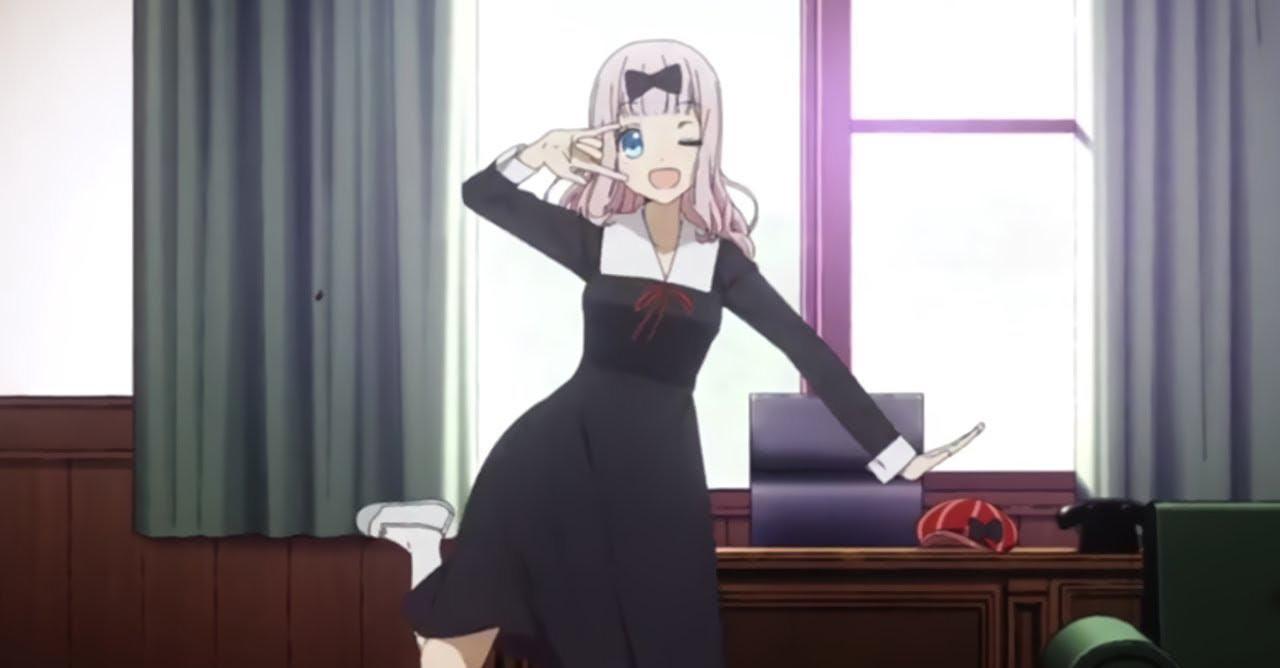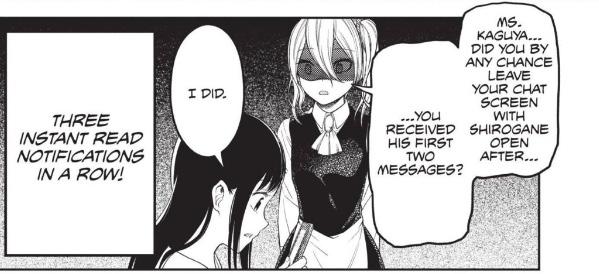
8 minute read
THE KAGUYA-SAMA ANIME IS THOROUGHLY DISAPPOINTING
TONY T. - Writer, 2nd Year, Intended Economics and Data Science
"Can’t wait to see audience reaction to the Kaguya (Ice) arc."
Advertisement
On a technical level, the anime adaptation of Kaguya-sama wa Kokurasetai: Tensai-tachi no Renai Zunousen is an almost one to one direct adaptation of the manga source material. Though it occasionally skips a few chapters and plays with the sequence, each segment of the adaptation is an almost verbatim reading of the original text. Despite this, as someone who has been following the manga and its author, Akasaka Aka, since before Kaguya’s inception, the anime completely misses the whole point of the manga. Dareisay, the manga’s core appeal, at least for me, is completely gone in its adaptation.
This becomes abundantly clear even without watching the anime. The opening for the first season, “Love Dramatic”, is a fairly competent song in the sense that it was pleasant for me to hear divorced from the show’s context. However, Love Dramatic absolutely does not fit the tone of the series. The repetition of the line “Love is War” may seem fitting to Western audiences, as the Western title of the series is Kaguya-sama: Love is War, but it holds little value in the series’ original context other than highlighting an increasingly irrelevant gimmick to the story. The romance “wars” are what generally popularized the anime, giving it an easy one-sentence tag for people to explain to others. However, the series consistently calls to the absurdity of these interactions, and downright omits them later on. As of the final draft of this article, the series has reached chapter 242, and this aspect has not had a meaningful presence for almost 100 chapters.
Beyond that issue, there is the obvious fact that Love Dramatic singer Suzuki Masayuki has a voice indicative of the general expectation of jazz. The song is definitely better off, but there’s a certain lack of awareness given the entire series focuses on the misadventurous love lives of teenagers. This could be part of the overall memetic tone and audience that the anime adaptation has attracted; under that interpretation, then, this anime misses the genuinity of Kaguya-sama’s overall messages. Perhaps this could be fitting for the stretch of 45 chapters that the first season adapts, but in a sense, this gives the complete wrong tone for the franchise as a whole, something that I believe the showrunners of the first season should have been aware of. One could say that an opening does not need to represent the tone of an anime, yet this one actively supports an interpretation of the series which I deem inaccurate.
On a similar note, while I have very few positive or negative things to say about Kaguya’s first ending, “Sentimental Crisis”, I cannot say the same for the famous (infamous?) “Chikatto Chika Chika”, which plays at the end of the third episode of the first season. Immediately becoming a hit Internet meme as soon as it aired, my issues with this ending are somewhat similar to the aforementioned problems I levied towards Love Dramatic. Embellishing something of a post-ironic tone and following, the “Chika Dance”, as it is famously known, once again runs contrary to the series’ inherently sincere feel, in spite of being a comedy. Given how that contradictory feel is what I love from Kaguya and Akasaka’s other work, ib: Instant Bullet, it should be no wonder as to why I don’t particularly care much for what is likely the most famous part of the Kaguya anime, as well as the aspect which increased its popularity in Western anime circles after the first two episodes were mostly only seen by existing manga fans in said circles. On a similar note, Chikatto Chika Chika pushed the character of Fujiwara Chika as the most prominent character of the series, in spite of her having the least importance out of the main cast. As a whole, though this is probably the most important part of why Kaguya as a series has an audience to begin with, this special ending embodies much of what makes the adaptation unpalatable as someone who gave the manga a 10/10 against an average manga score of 5.02.

In terms of the Kaguya anime itself, the most immediate difference between the manga and anime is the presence of an omnipresent narrator. Just like Chikatto Chika Chika, this disembodied voice is likely one of the most popular things that propelled the anime adaptation to its current level of popularity. At face value, it is a direct adaptation of the numerous square bubbles of narration present in the original. As someone who enjoys the manga’s narration, the anime’s narration is a clear example of why certain details in one medium cannot be directly translated to another. By giving the narration boxes a voice, the anime adaptation gave them a character. “He” is now established as being a man, sporting a deep voice, and a somewhat ironic disposition. As a large presence in much of Kaguya, it creates something of a disconnect between the audience and the show, akin to watching a commentary track instead of watching a film by itself. Once again, this also furthers the memetic appeal of the series, something that ostensibly would fit with the author and series’ sense of humor, but absolutely does not work in the anime, due to the writing being inherently absurd yet concealing a layer of hidden sincerity. All of this could be said of the manga as well, given it features the exact same text which the narrator reads. The difference is, the manga’s narration has no character. It is a part of the world of Kaguya, and therefore there is no tone or sentiment conveyed by the textual narration aside from what the readers interpret. If the narration had to be given a character, it’d be the author, or the characters’ inner egos.
My last complaint regarding the Kaguya anime’s narration, that it takes up too much time, ties into an overall complaint about the differences between anime and manga as mediums. Simply put, manga are paced by the reading speeds, different for each individual, whereas anime has a set length. Any given episode of the anime typically lasts 24 episodes, covering 3 chapters, leaving 8 minutes per chapter. The content within Kaguya’s manga is fairly humorous, but it does not warrant the amount of time that an episode of the anime takes. Kaguya is a series that feels more meaningful not with each individual chapter, but in its 10-15 chapter arcs. Chapters of the manga likely take little more than 1 minute for most people to read, yet are given almost 8 times the length because it would make little logical sense in the television medium for the characters, including the “narrator”, to talk so fast. By directly adapting Kaguya verbatim from manga to anime, A-1 Pictures drew out existing peripheral elements and put a great deal of focus on irrelevant new details.

Translating such a text-heavy work to anime is difficult, but not impossible. Studio Shaft, for instance, have created a reputation off of their anime adaptations of Monogatari and Sayonara Zetsubou Sensei. If said studio had adapted Kaguya, the narrator would be bouts of flashing text and some sort of visual direction would have been put into making conversation scenes, something that characterizes Kaguya, more aesthetically compelling. To give credit to A-1 Pictures, a studio whose lack of positive reputation is itself a dead joke, there was definite effort placed in making the series’ dialogue scenes interesting with the inclusion of an abundance of visual gags. However, as can be expected at this point, I don’t believe it contributes in any meaningful way. The point of Kaguya, in my view, is always rooted in a mix of sharp wit and genuine emotion. The cutaways and other visual metaphors present in the adaptations, then, have the effect of trying to abundantly explain a joke. This ruins the balance of comedy and sincerity in the series, just as other aforementioned adaptational shifts have. More simple to see, though, is that explaining the joke makes the comedy in the series, which is already somewhat lukewarm, all the more groan-inducing.
Obviously, much of what I’ve criticized has made Kaguya-sama a hit, but this article isn’t to evaluate popularity. To be fair, this isn’t to serve as (some false notion of) objective critique either. Rather, all the above is an explanation as to why I, as a fan of Akasaka Aka before the inception of Kaguya, thoroughly find the adaptation to be lacking. At 1594 words, this is a somewhat protracted article, and certainly one of my longer ones. Yet, I could easily go on for double the length in picking apart every small aspect of the manga that cannot work on television without changes. In spite of being technically identical, the differences in anime and manga are vast. It’s why fans of many textual works will constantly campaign against film adaptations. There are different considerations required, and the anime staff failed to analyze how to make certain things work, opting to directly adapt the manga. What changes the staff did make were either pointless, or actively disruptive of the series’ messages. I cannot overstate how happy I am that the anime was popular, because it ensured the manga’s existence and secured Akasaka Aka platforms to write whatever crazy batshit comes to his mind (read Oshi no Ko). However, I view the anime adaptation to be a sorely missed opportunity for a truly transcendent work beyond the usual confines of seasonal anime into becoming a modern classic, and I hope the criticism I’ve levied here is indicative as to why.

